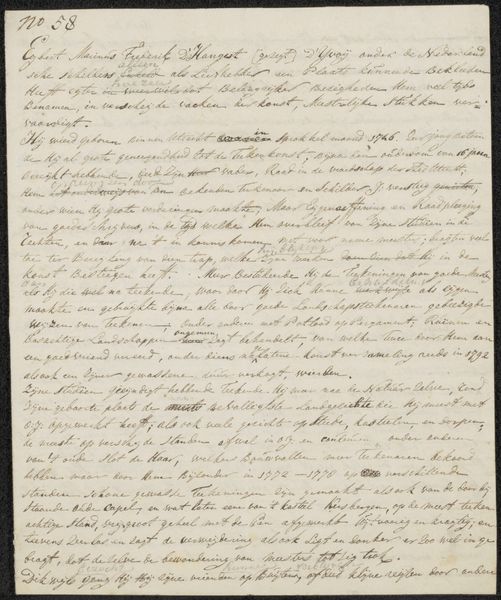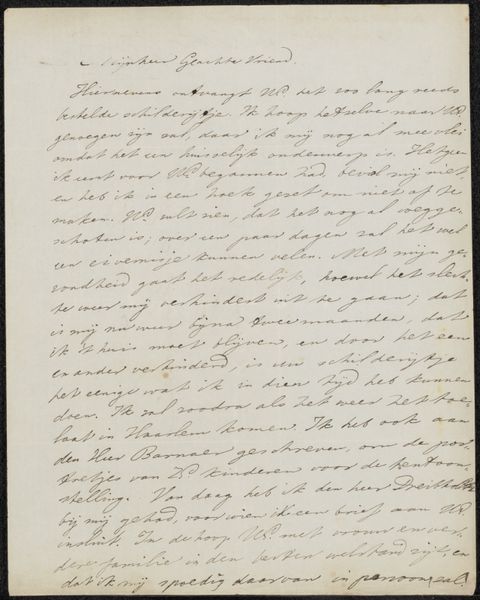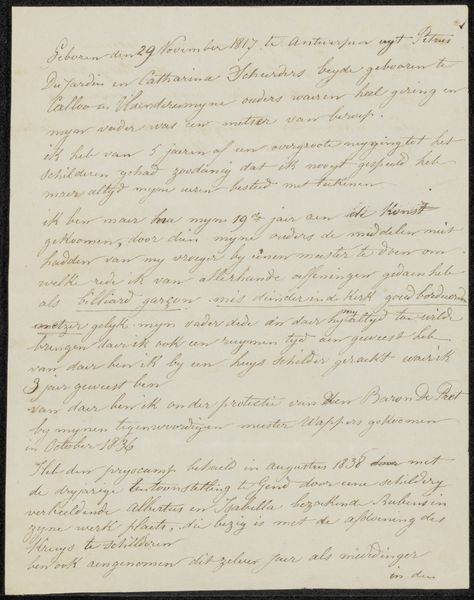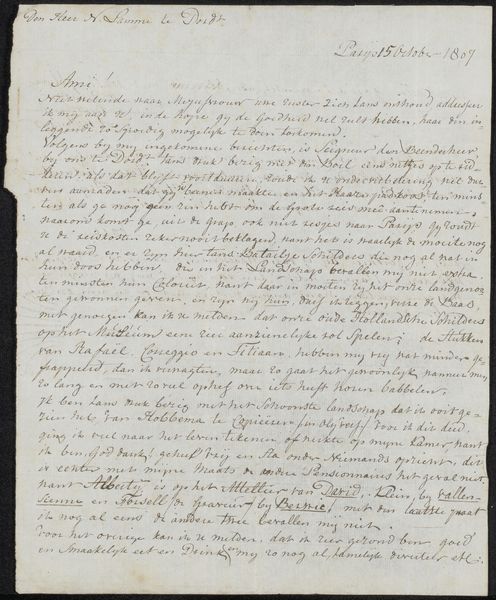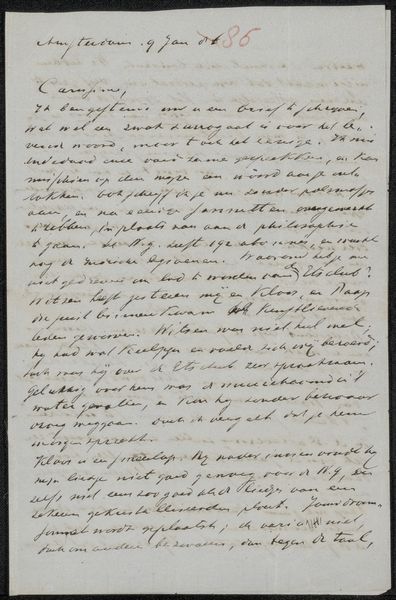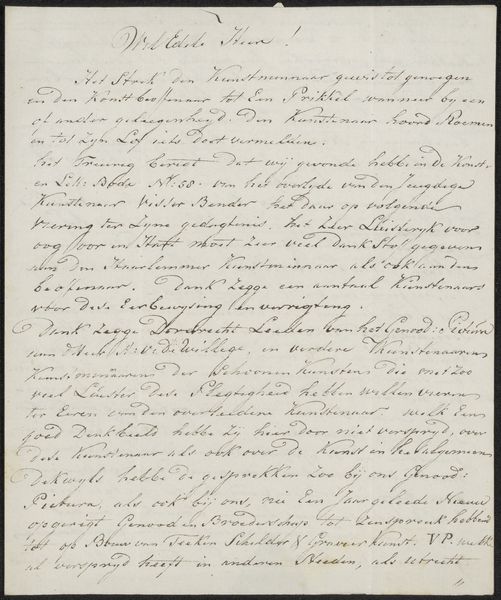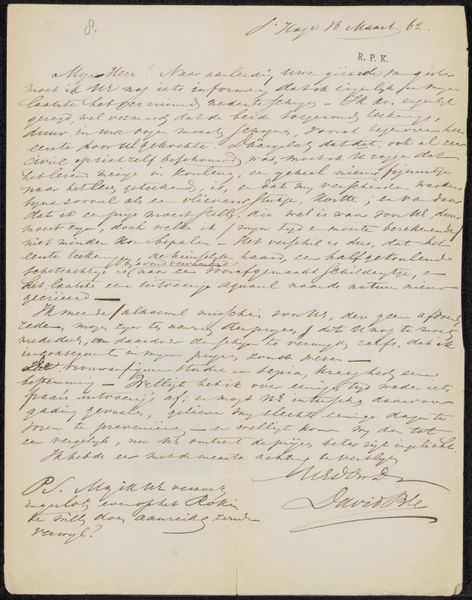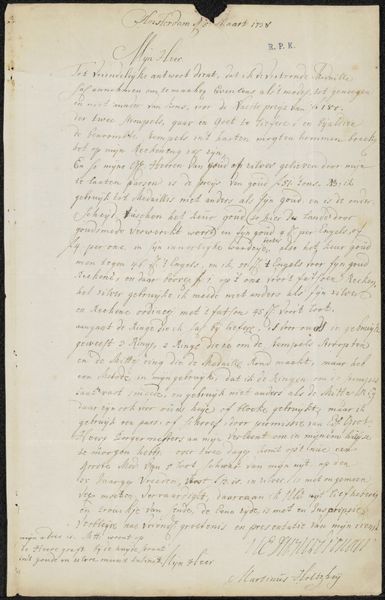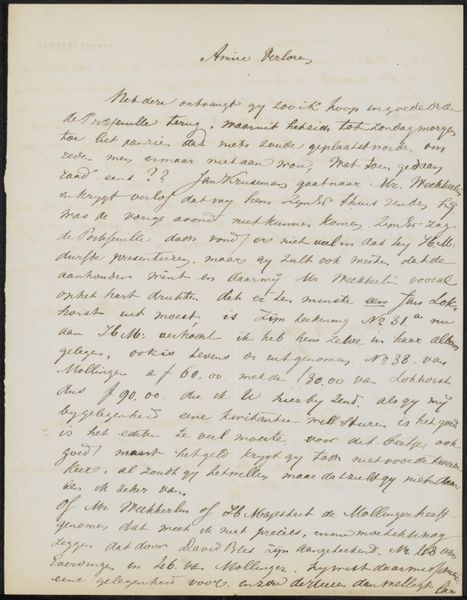
drawing, paper, ink, pen
#
drawing
#
narrative-art
#
paper
#
ink
#
pen
#
calligraphy
Copyright: Rijks Museum: Open Domain
Curator: Let's dive into this document. The title reads "Handschrift betreffende Franciscus Donatus Witdoeck," dating from after 1766, seemingly a handwritten piece related to someone named Franciscus Donatus Witdoeck. What captures your attention initially? Editor: It strikes me as dense. It's all text, very little white space. And it has the feel of old paper; you can imagine how its materiality affected the author, and its potential readers. Given the reference to handwriting, it feels very personal, even intimate. How do you approach something like this? Curator: I immediately consider its creation. It's ink on paper, carefully calligraphed. How does that impact our perception? The choice of materials wasn't arbitrary; they dictated the pace and style of writing. The hand-written nature of this tells us about access to knowledge and the modes of disseminating it. Can you see it too? Editor: Yes! Now I'm noticing that— the ink is consistent, so was it a formal process? A legal document, or something of that nature? And were these papers generally accessible at that time? Curator: It raises a few intriguing possibilities. Considering its material reality, what if the skill of the calligrapher—their labor—is actually central? Or is the importance the man of learning discussed? And did the document have a social purpose to convey education to the people in a new class in society, or maintain privilege by writing in a complex coded way? Editor: Fascinating! I hadn’t considered the writing itself as labor, as a designed performance. This piece encourages us to look at knowledge dissemination in the period not only in terms of content but production. Curator: Precisely! Examining art this way unearths hidden dimensions. I look at this not just for historical context, but to understand the conditions that allowed its creation.
Comments
No comments
Be the first to comment and join the conversation on the ultimate creative platform.
